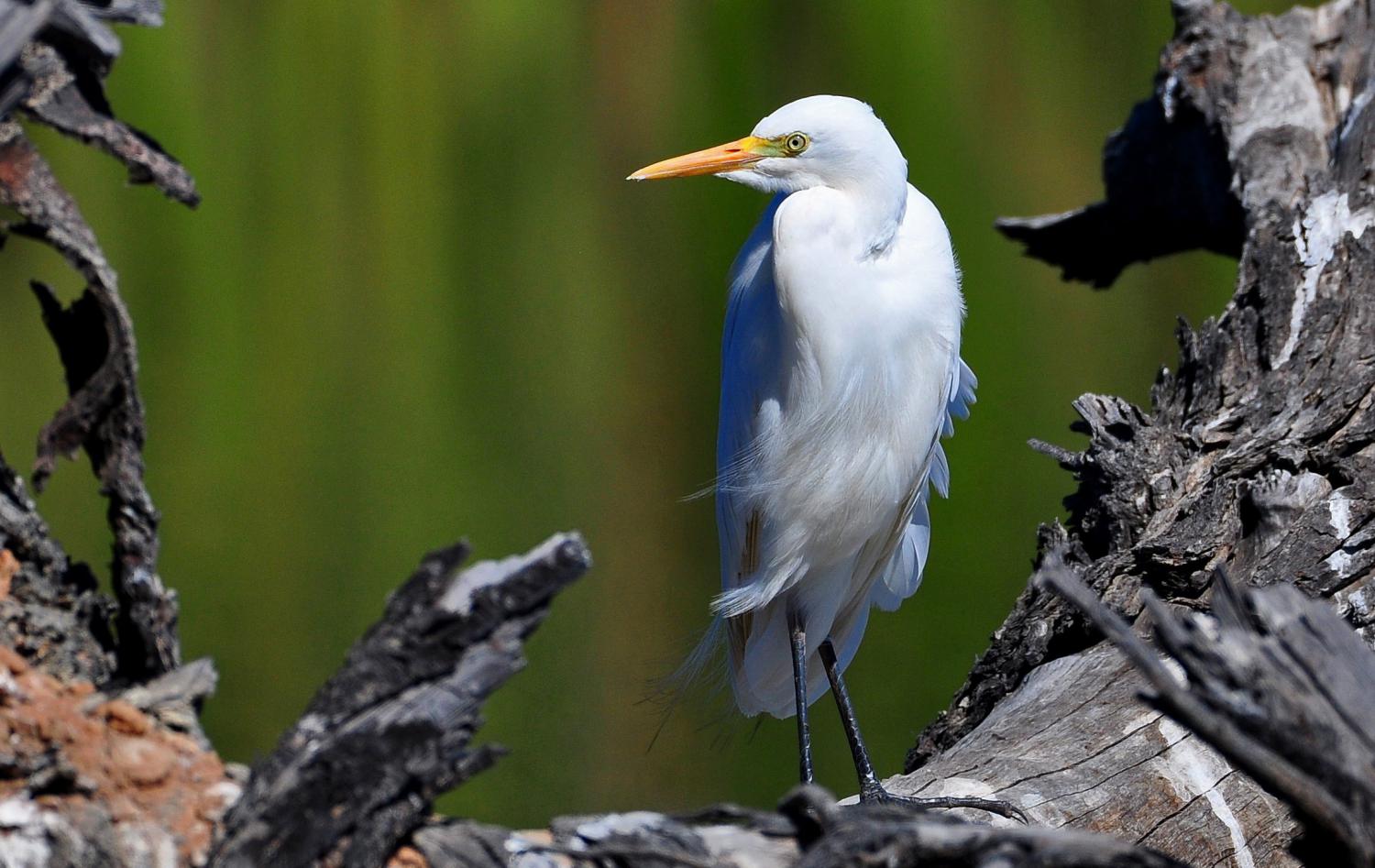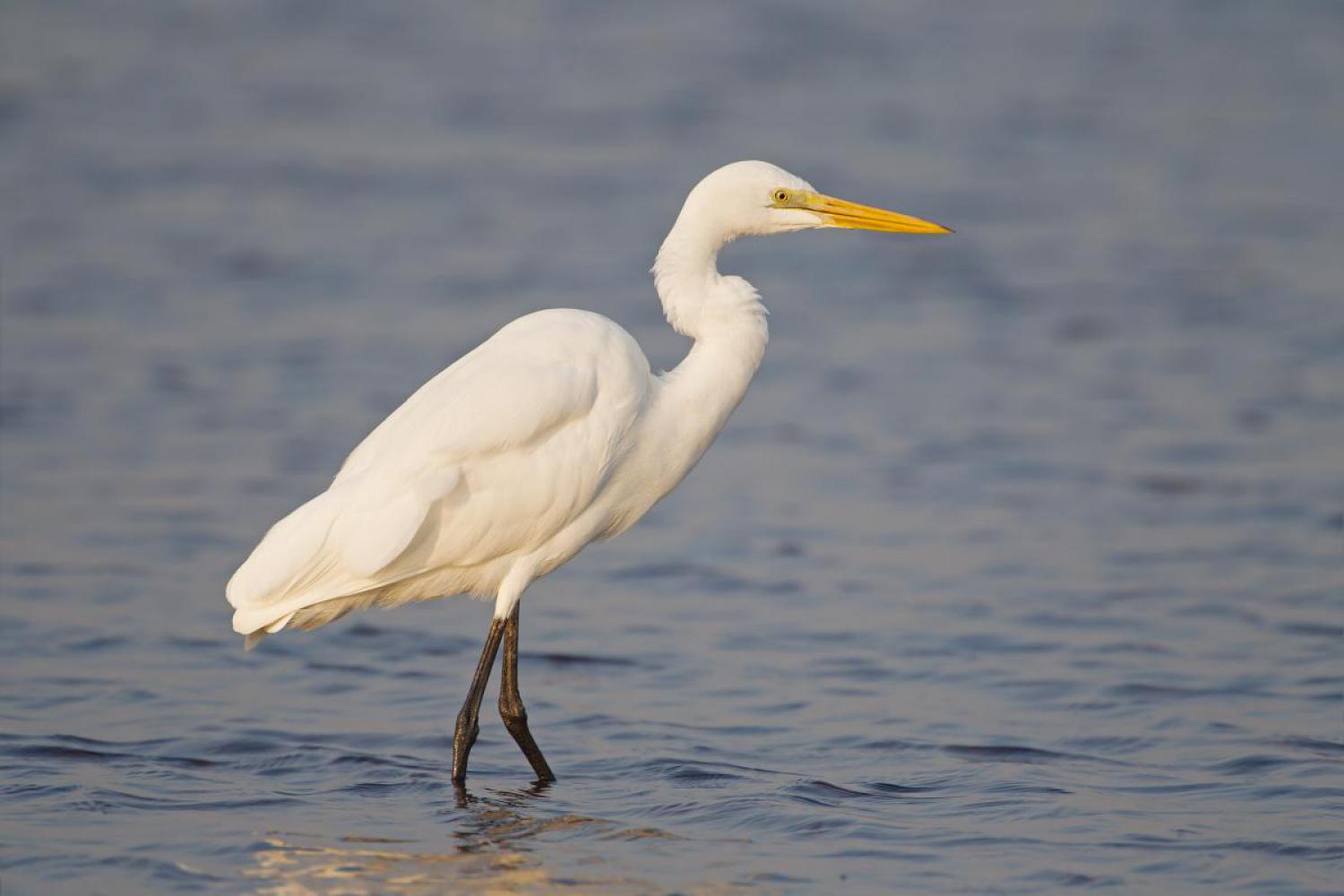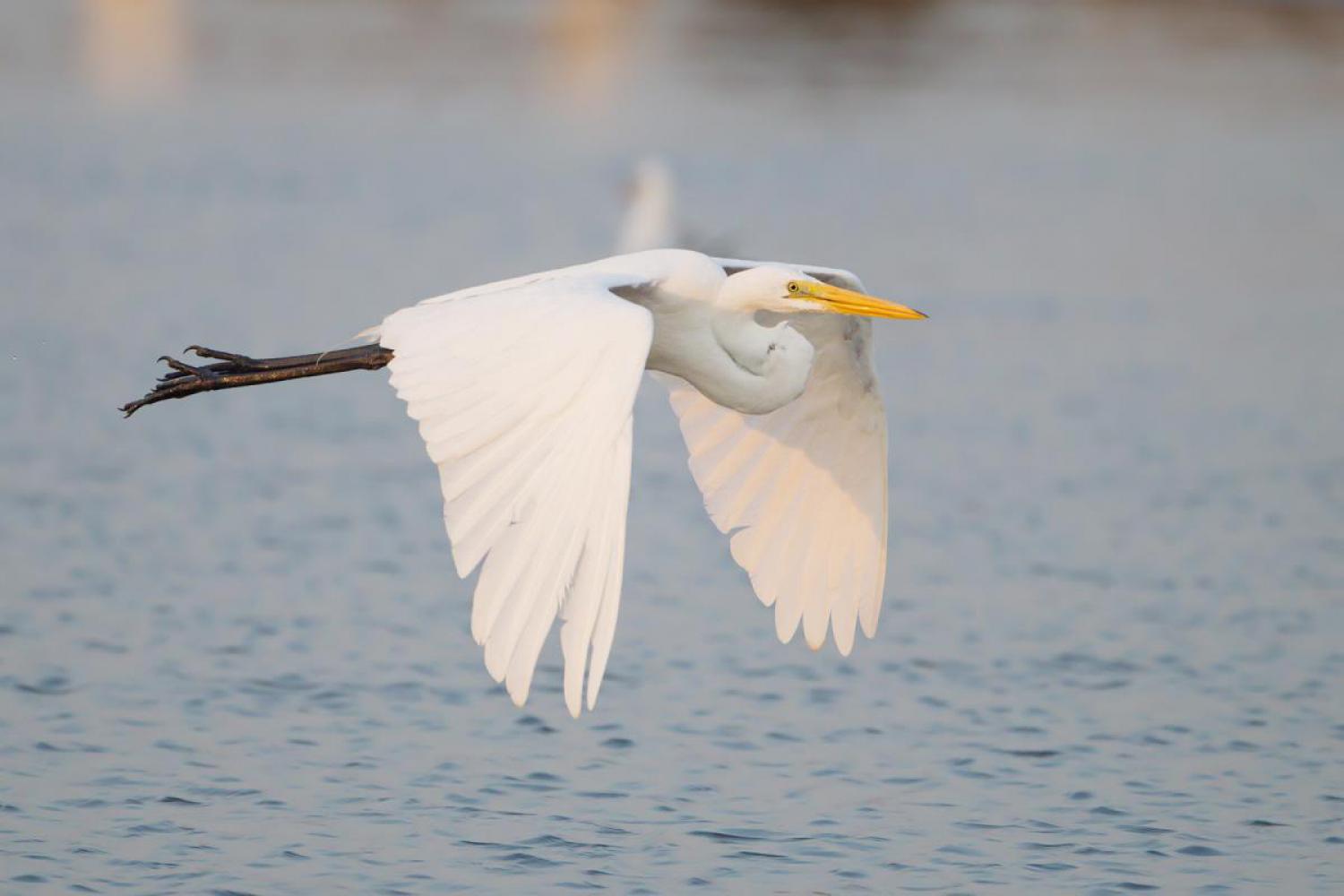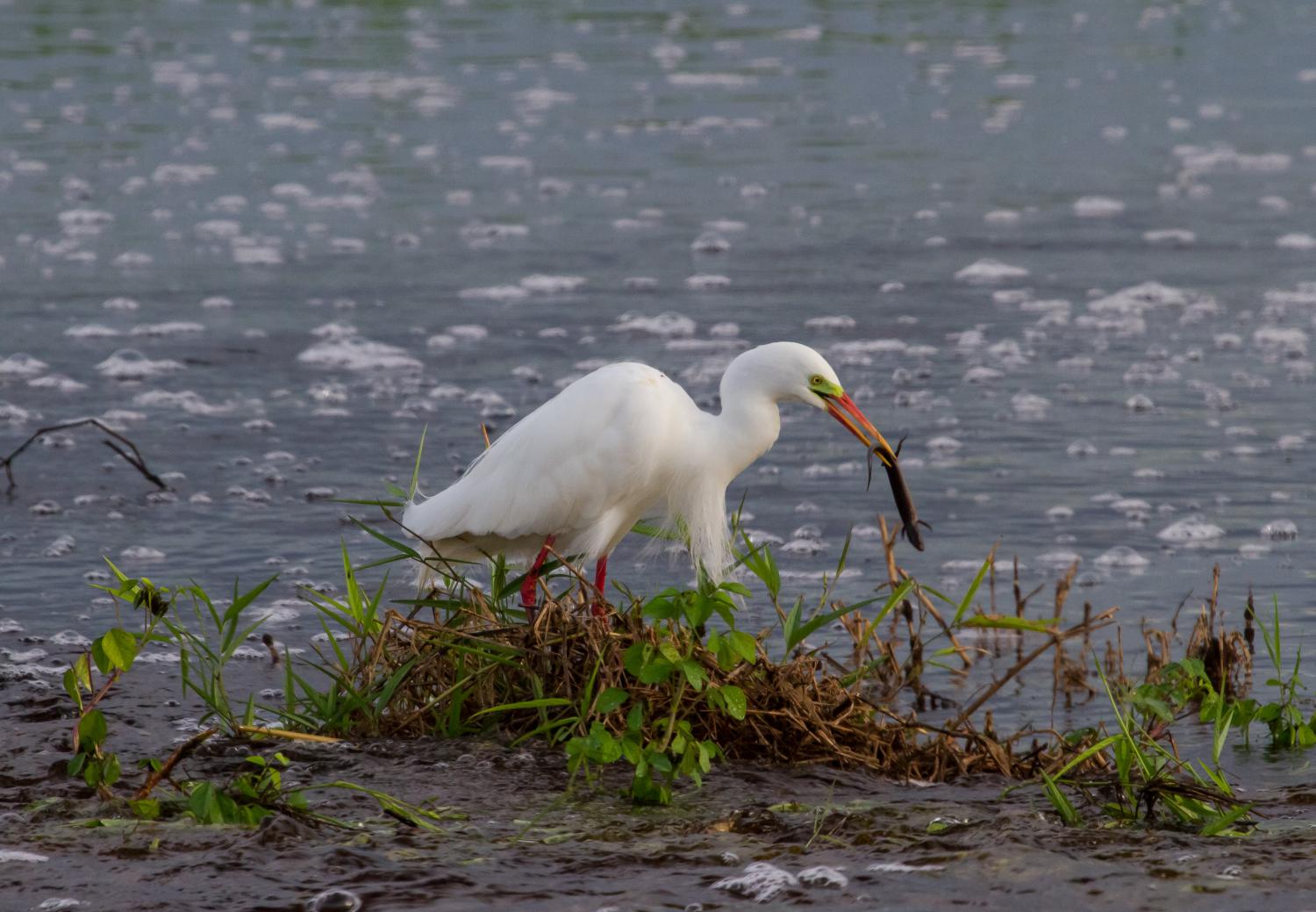Species of Thailand
Intermediate egret
Ardea intermedia
Johann Georg Wagler, 1827
In Thai: นกยางโทนน้อย
The intermediate egret, median egret, smaller egret, or yellow-billed egret (Mesophoyx intermedia) is a medium-sized heron. Some taxonomists put the species in the genus Egretta or Ardea. It is a resident breeder from east Africa across the Indian subcontinent to Southeast Asia and Australia.
Description
This species, as its scientific name implies, is intermediate in size between the great egret and smaller white egrets like the little egret and cattle egret, though nearer to little than great. It is about 56 – 72 cm long with a 105 – 115 cm wingspan and weighs c. 400 g, with all-white plumage, generally dark legs and a thickish yellow bill. Breeding birds may have a reddish or black bill, greenish yellow gape skin, loose filamentous plumes on their breast and back, and dull yellow or pink on their upper legs (regional variations). The sexes are similar.
Differences from great egret
The non-breeding colours are similar, but the intermediate is smaller, with neck length a little less than body length, a slightly domed head, and a shorter, thicker bill. The great egret has a noticeable kink near the middle of its neck, and the top of its longer bill nearly aligns with the flat top of its head. Close up, the bare skin of the great egret's gape line extends in a dagger shape behind the eye, while the Intermediate's is less pointed and ends below the eye. The intermediate tends to stalk upright with neck extended forward. The great is more patient, often adopting a sideways-leaning "one-eyed" stance.
Differences from little egret
Little egrets have yellow-soled feet and black bills. They often run after fish in shallow water. Breeding birds have long nuptial plumes on the back of their heads.
Behaviour
The intermediate egret stalks its prey methodically in shallow coastal or fresh water, including flooded fields. It eats fish, frogs, crustaceans and insects. It often nests in colonies with other herons, usually on platforms of sticks in trees or shrubs. Two to five eggs are laid, the clutch size varying with region.
This article uses material from Wikipedia released under the Creative Commons Attribution-Share-Alike Licence 3.0. Eventual photos shown in this page may or may not be from Wikipedia, please see the license details for photos in photo by-lines.
Category / Seasonal Status
Wiki listed status (concerning Thai population): Winter visitor
BCST Category: Recorded in an apparently wild state within the last 50 years
BCST Seasonal statuses:
- Resident or presumed resident
- Non-breeding visitor
Scientific classification
- Kingdom
- Animalia
- Phylum
- Chordata
- Class
- Aves
- Order
- Pelecaniformes
- Family
- Ardeidae
- Genus
- Ardea
- Species
- Ardea intermedia
Common names
- Thai: นกยางโทนน้อย
Subspecies
Ardea intermedia brachyrhyncha, Alfred Edmund Brehm, 1854
Common name: Yellow-billed egret
Range: Africa south of the Sahara
Ardea intermedia intermedia, Johann Georg Wagler, 1829
Common name: Lesser egret
Range: Japan to s India and Greater Sundas
Ardea intermedia plumifera, John Gould, 1848
Common name: Plumed egret
Range: New Guinea, eastern Indonesia and Australia
Synonyms
- Mesophoyx intermedia, Johann Georg Wagler (1827)
- Egretta intermedia, Johann Georg Wagler (1827)
Conservation status
Not Evaluated (IUCN3.1)
Photos
Please help us review the bird photos if wrong ones are used. We can be reached via our contact us page.
Range Map
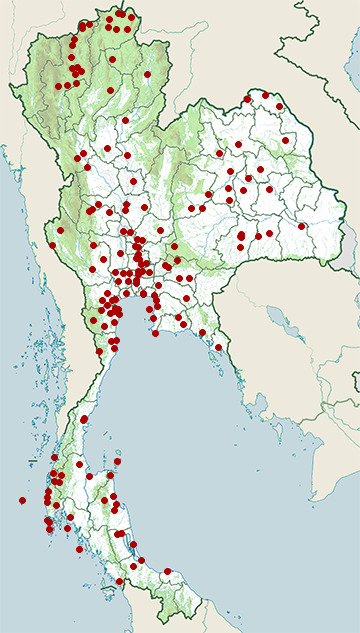
- Amphawa District, Samut Songkhram
- Ban Laem District, Phetchaburi
- Ban Lat District, Phetchaburi
- Ban Lueam District, Nakhon Ratchasima
- Ban Phai District, Khon Kaen
- Ban Phraek District, Phra Nakhon Si Ayutthaya
- Bang Ban District, Phra Nakhon Si Ayutthaya
- Bang Lamung District, Chonburi
- Bang Len District, Nakhon Pathom
- Bang Pa In District, Phra Nakhon Si Ayutthaya
- Bang Pahan District, Phra Nakhon Si Ayutthaya
- Bang Pakong District, Chachoengsao
- Bang Phra Non-Hunting Area
- Bang Pu Recreation Centre
- Bangkok Province
- Borabue District, Maha Sarakham
- Bueng Boraped Non-Hunting Area
- Bueng Khong Long Non-Hunting Area
- Chaiya District, Surat Thani
- Chaiyo District, Ang Thong
- Chatturat District, Chaiyaphum
- Chiang Dao District, Chiang Mai
- Chiang Khong District, Chiang Rai
- Chiang Saen District, Chiang Rai
- Chum Ta Bong District, Nakhon Sawan
- Doi Inthanon National Park
- Doi Lo District, Chiang Mai
- Doi Pha Hom Pok National Park
- Doi Saket District, Chiang Mai
- Fang District, Chiang Mai
- Hat Yai District, Songkhla
- Huai Chorakhe Mak Reservoir Non-Hunting Area
- Huai Kha Khaeng Wildlife Sanctuary
- Huai Krachao District, Kanchanaburi
- Huai Talat Reservoir Non-Hunting Area
- In Buri District, Sing Buri
- Kabin Buri District, Prachinburi
- Kaeng Krachan National Park
- Kamphaeng Saen District, Nakhon Pathom
- Kanthararom District, Sisaket
- Kantharawichai District, Maha Sarakham
- Khanom District, Nakhon Si Thammarat
- Khao Laem National Park
- Khao Lak - Lam Ru National Park
- Khao Luang National Park
- Khao Nang Phanthurat Forest Park
- Khao Sam Roi Yot National Park
- Khao Sanam Prieng Wildlife Sanctuary
- Khao Sok National Park
- Khao Yai National Park
- Khao Yoi District, Phetchaburi
- Khlong Luang District, Pathum Thani
- Khlong Saeng Wildlife Sanctuary
- Khuan Khanun District, Phatthalung
- Khun Tan District, Chiang Rai
- Khura Buri District, Phang Nga
- Klaeng District, Rayong
- Ko Lanta National Park
- Ko Samui District, Surat Thani
- Ko Sichang District, Chonburi
- Kui Buri National Park
- Kumphawapi District, Udon Thani
- Kut Thing Non-Hunting Area
- Laem Pak Bia
- Laem Son National Park
- Lan Sak District, Uthai Thani
- Lan Sang National Park
- Mae Ai District, Chiang Mai
- Mae Chan District, Chiang Rai
- Mae Mo District, Lampang
- Mae Rim District, Chiang Mai
- Mae Taeng District, Chiang Mai
- Mueang Buriram District, Buriram
- Mueang Chachoengsao District, Chachoengsao
- Mueang Chanthaburi District, Chanthaburi
- Mueang Chiang Mai District, Chiang Mai
- Mueang Chiang Rai District, Chiang Rai
- Mueang Chonburi District, Chonburi
- Mueang Chumphon District, Chumphon
- Mueang Kalasin District, Kalasin
- Mueang Kanchanaburi District, Kanchanaburi
- Mueang Khon Kaen District, Khon Kaen
- Mueang Krabi District, Krabi
- Mueang Lamphun District, Lamphun
- Mueang Lopburi District, Lopburi
- Mueang Nakhon Nayok District, Nakhon Nayok
- Mueang Nakhon Pathom District, Nakhon Pathom
- Mueang Nakhon Si Thammarat District, Nakhon Si Thammarat
- Mueang Nan District, Nan
- Mueang Nonthaburi District, Nonthaburi
- Mueang Pathum Thani District, Pathum Thani
- Mueang Pattani District, Pattani
- Mueang Phang Nga District, Phang Nga
- Mueang Phayao District, Phayao
- Mueang Phetchaburi District, Phetchaburi
- Mueang Phitsanulok District, Phitsanulok
- Mueang Phuket District, Phuket
- Mueang Ratchaburi District, Ratchaburi
- Mueang Samut Sakhon District, Samut Sakhon
- Mueang Samut Songkhram District, Samut Songkhram
- Mueang Satun District, Satun
- Mueang Songkhla District, Songkhla
- Mueang Sukhothai District, Sukhothai
- Mueang Suphanburi District, Suphan Buri
- Mueang Surat Thani District, Surat Thani
- Mueang Surin District, Surin
- Mueang Tak District, Tak
- Mueang Trat District, Trat
- Mueang Uttaradit District, Uttaradit
- Non Sang District, Nong Bua Lamphu
- Nong Bong Khai Non-Hunting Area
- Nong Han Lake
- Nong Prue District, Kanchanaburi
- Nong Song Hong District, Khon Kaen
- Nong Waeng Non-Hunting Area
- Nong Ya Plong District, Phetchaburi
- Nong Yai Area Development Project Under Royal Init
- Pa Sak Chonlasit Dam Non-Hunting Area
- Pak Chong District, Nakhon Ratchasima
- Pak Phli District, Nakhon Nayok
- Pak Thale
- Pak Tho District, Ratchaburi
- Pha Daeng National Park
- Phaisali District, Nakhon Sawan
- Phayuha Khiri District, Nakhon Sawan
- Phi Phi Islands
- Phra Nakhon Si Ayutthaya District, Phra Nakhon Si Ayutthaya
- Phra Phrom District, Nakhon Si Thammarat
- Phutthamonthon District, Nakhon Pathom
- Pran Buri District, Prachuap Khiri Khan
- Pran Buri Forest Park
- Rattanawapi District, Nong Khai
- Sai Noi District, Nonthaburi
- Samae San Island
- Samut Prakan Province
- San Sai District, Chiang Mai
- Sanam Bin Reservoir Non-Hunting Area
- Sankhaburi District, Chainat
- Sathing Phra District, Songkhla
- Si Maha Phot District, Prachinburi
- Sikhoraphum District, Surin
- Similan Islands
- Sirinat National Park
- Sri Phang Nga National Park
- Takua Pa District, Phang Nga
- Taphan Hin District, Phichit
- Tha Sala District, Nakhon Si Thammarat
- Tha Takiap District, Chachoengsao
- Tha Wung District, Lopburi
- Tha Yang District, Phetchaburi
- Thai Mueang District, Phang Nga
- Thalang District, Phuket
- Thale Noi Non-Hunting Area
- Thanyaburi District, Pathum Thani
- Thap Than District, Uthai Thani
- Thawat Buri District, Roi Et
- Thong Pha Phum National Park
- Wang Chan District, Rayong
- Wang Noi District, Phra Nakhon Si Ayutthaya
- Wat Phai Lom & Wat Ampu Wararam Non-Hunting Area
- Wiang Chai District, Chiang Rai
